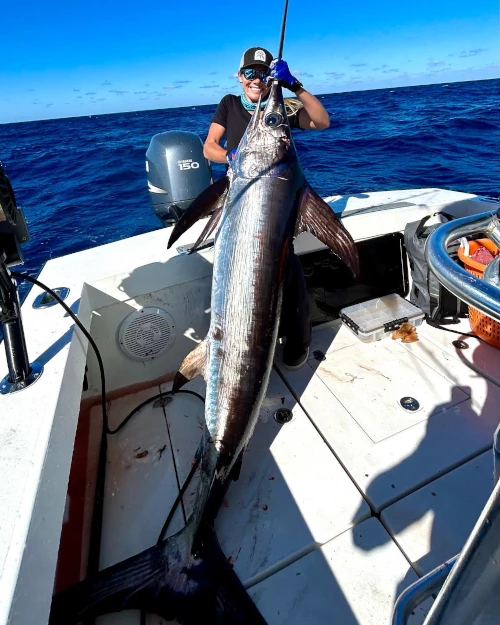Top 10 Spearfishing Safety Tips You Didn't Know You Needed
- Flying Fishman

- Apr 1
- 4 min read
Spearfishing is more than just a sport; it's an adventure filled with excitement, beauty, and challenges. However, with this thrill comes significant risks. Whether you're an experienced diver or just starting out, ensuring your safety and that of your companions is vital. Here, we share ten essential spearfishing safety tips that could make all the difference in your underwater journey.
Understanding Your Environment for Fishing
Before you dive in, take a moment to survey the area where you plan to fish. Understanding the local currents and tides can prevent accidents. For instance, tides can change rapidly; an incoming tide can create strong currents that may overwhelm an unprepared diver.
Research shows that about 80% of diving accidents occur in unfamiliar waters. Thus, knowing the local fishing regulations and the wildlife you might encounter is essential. In certain areas, specific fish species have seasonal restrictions, so familiarizing yourself ahead of time can help avoid any unwarranted violations.
Buddy System is Key
Diving with a buddy is a simple yet effective way to enhance safety. According to statistics, 90% of diving accidents happen when people are alone. Having a partner ensures that someone is looking out for you. Before you start, discuss each other's skills and weaknesses. If one diver is more skilled, they should choose a spot that matches the less experienced diver's capabilities.
Additionally, you can share the thrill of hunting and exploring, making the experience more enjoyable and less stressful.
Safety Gear is Not Optional
Safety gear is crucial, and investing in the right equipment can mean the difference between safety and danger. A good wetsuit not only keeps you warm but also protects you from marine life and sharper underwater surfaces. Ensure your wetsuit is rated for the water temperature; for example, a 3mm suit is usually adequate for temperatures around 70°F (21°C).
Gloves and fins also play critical roles. The right fins can improve your swimming efficiency by up to 30%. Don't forget a well-fitting dive mask and snorkel, as visibility is crucial for spotting hazards underwater.
Know Your Limits
It can be tempting to push your limits, especially in the excitement of spearfishing. However, understanding when to take a break is vital. Studies indicate that approximately 30% of divers suffer from fatigue-related accidents. If you’re feeling tired or the conditions become challenging, it’s wise to call it a day.
Additionally, diving at greater depths can increase the risk of decompression sickness. Stick within your comfort zone until you're more experienced.
Stay Hydrated and Well-Nourished
Staying hydrated is essential. Dehydration can lead to fatigue, which has been cited as a contributing factor in about 20% of diving incidents. Drink water before and after your dive, and pack light snacks such as granola bars or fruits for energy.
Eating complex carbohydrates before diving can increase your endurance. For instance, having a banana before you dive can help maintain your energy levels.
Understand Marine Life
Knowledge of the local marine life is crucial. Certain species can be aggressive or venomous. For example, stonefish are highly camouflaged and one of the most venomous fish in the world. Recognizing which species to avoid can prevent dangerous encounters.
Additionally, learning how to interact responsibly with marine creatures fosters a healthier ecosystem for future generations. Educating yourself about the local environment will only enhance your diving experience.
Use Floatation Devices
Floatation devices are valuable to divers of all experience levels. Even seasoned spearfishers should consider a buoy or float for signaling and safety. A typical dive float allows you to remain visible in busy waterways, helping you avoid potential collisions with boats.
Look for a high visibility buoy that also has a dive flag. Statistically, using a dive flag reduces the likelihood of accidents by over 50%, as boaters are alerted to your presence in the water.
Plan Your Dive and Stick to It
Planning your dive is crucial for safety. Discuss your dive plan with your buddy before entering the water. Set clear objectives and agree on a return time. Research indicates that divers with a clear plan are 40% less likely to encounter dangerous situations.
Stick to designated areas to avoid disorientation. Aimless wandering can lead to accidents, increase the risk of losing your buddy, and compromise overall safety.
Stay Aware of Your Surroundings
While hunting may consume your attention, staying alert to your surroundings is vital. Watch for changing weather conditions, currents, and other divers. Surveys show that 70% of diving incidents could be avoided with greater awareness.
Always check for boats above you and stay mindful of the surface conditions. Rapid changes can create hazards both for you and your diving partner, so stay aware and adjust your dive accordingly.
Perform Regular Gear Checks
Conducting regular gear checks before diving can prevent accidents. Approximately 40% of equipment failures occur due to improper maintenance. Inspect your spearfishing equipment, including your spear gun and floats, for wear and tear.
Ensure all equipment is functioning well; if something seems off, address it before entering the water. Regular maintenance not only prevents accidents but also enhances your overall performance.
Final Thoughts
Spearfishing is a fantastic way to connect with nature, but safety must remain a priority. Following these tips—by understanding your environment, knowing your limits, and recognizing marine life—will enhance both your safety and enjoyment while diving.
So put on that gear, keep safety in mind, and get ready for an unforgettable adventure beneath the waves!





